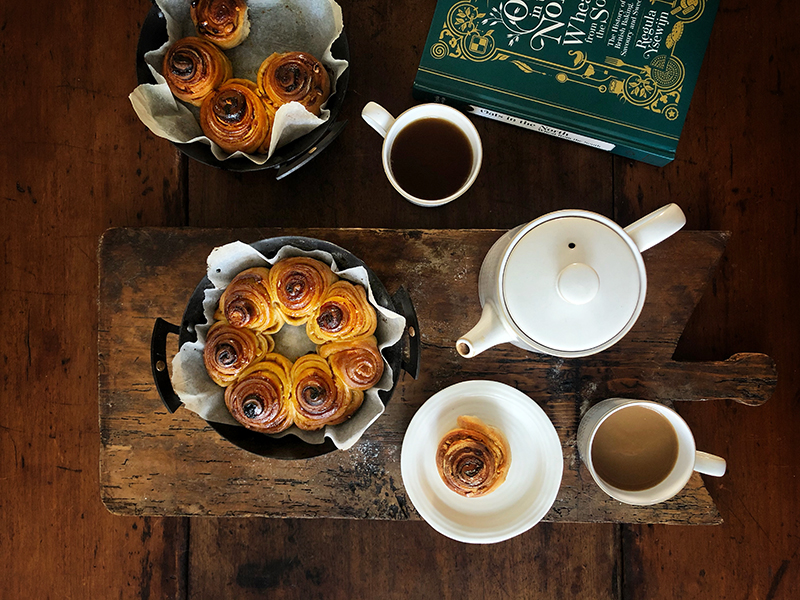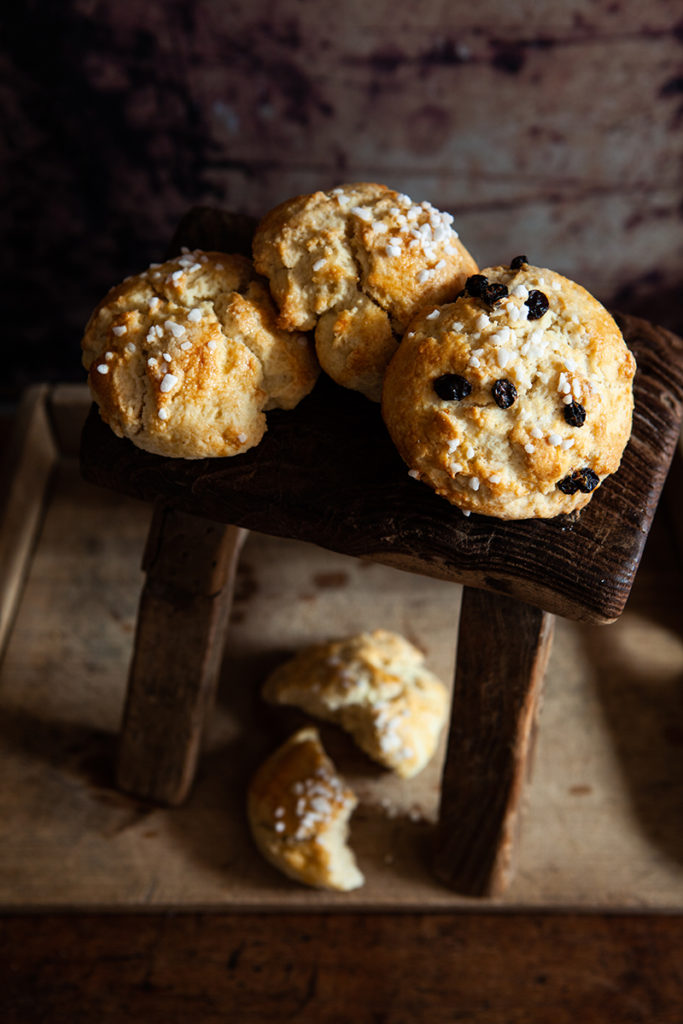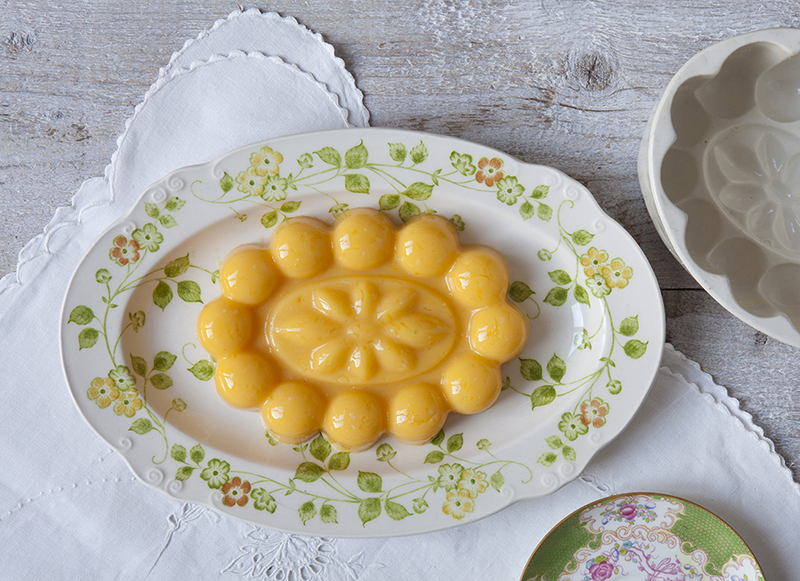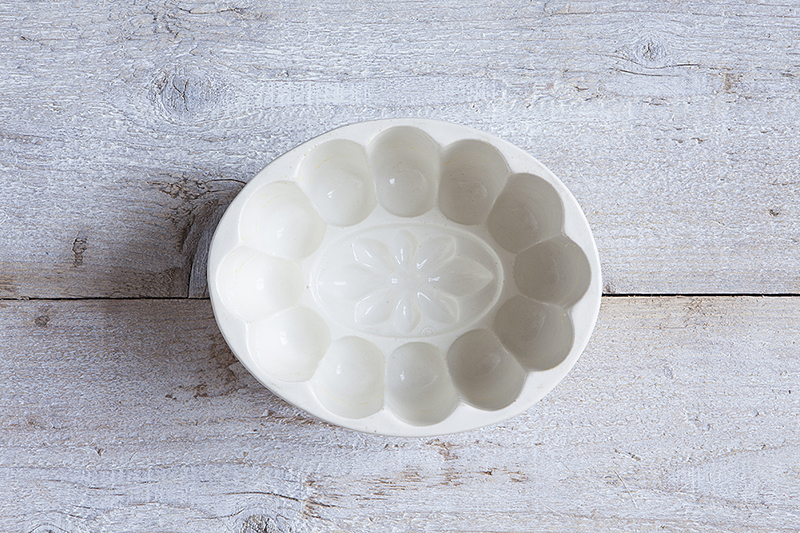The post Mini Chelsea Bun Crowns appeared first on Miss Foodwise.
]]>
I’ve been sharing videos and easy baking ideas on my Instagram @Missfoodwise during these strange times, some will be handy to make things easier for you for when you want to get some thing beautiful and delicious on the table quick. I’ve posted a few recipes from my new book Oats in the North Wheat from the South – which came out in full lockdown and saw all my events in the UK cancelled. Luckily I was able to do my BBC Womans’ hour interview over the phone as I would have been sad to miss is.
I also posted some ideas for overnight doughs so you can prep before bed and bake in the morning for breakfast or lunch. This is one of those bakes (there is also overnight bread buns and quick pan pizza for same day baking) that looks great on your table, looks great to give as gifts – I’ve gifted one of the crowns to my neighbours who are doctors and can use some unexpected cheer and sweetness right now.
These buns are a variation on my Chelsea buns from the book but made so that you can leave the dough at room temperature overnight. If you want to bake them to eat on the same day, add more yeast as explained below.
Makes 3 small crowns
- 6 g dried yeast (15 g if you are baking on the same day, then first rise is 1 hour)
- 300 ml full-fat milk, room temp (lukewarm if you’re baking on the same day)
- 500 g strong white bread flour
- 60 g raw (demerara) sugar or white sugar
- 1 tsp ground cinnamon (or use pumpkin spice instead of the spices)
- 1/4 tsp ground mace
- ¹⁄8 tsp ground coriander
- 70 g butter, at room temperature, cubed
- 1 egg
- 5 g fine sea salt
For the filling
- 3-4 tbsp lemon curd
- 2 tbsp fine sugar
- Chopped hazelnuts
- Milk for brushing
For the sugar syrup
- 60 g (2. oz) raw (demerara) sugar or
- white sugar
- 5 tbsp water
- caster (superfine) sugar, for sprinkling
Method
Combine the flour, yeast, sugar and spices in a large bowl or the bowl of an electric mixer fitted with a dough hook and put the butter on top. Pour half of the milk over the butter and start kneading. When the milk and butter are completely absorbed, add the rest of the milk , along with the egg. Knead for 5 minutes, then let the dough stand for a few minutes (at this point it will be very wet). Add the salt and then knead for 10 minutes, scraping the dough off the dough hook and side of the bowl if needed, until the dough has come together in a smooth and elastic dough that is not too dry but also not terribly wet.
Cover the dough and set aside for 1 hour until it has doubled in quantity – OR WHEN USING THE OVERNIGHT METHOD: cover the bowl with the dough with plastic and leave until te morning at room temperature.
Line the baking tin or pan(s) with baking paper. Towards the end of the resting time, or in the morning, preheat the oven to 210°C
Divide the dough in two and shape one piece to a rectangle, roll out as thinly as possible, making sure you keep the shape (I’ve posted a video on my instagram feed @Missfoodwise)
Spread the dough with half the lemon curd, sprinkle over half the sugar and cover in half the chopped nuts. Divide lengthwise in 3 cm strips and roll those over to fill your tin(s) or pan(s) with. Do the same with the other half of the dough and then brush the buns all over with milk. These buns do not need to rise as we want the layers thin, so you can now immediately bake them! However if you like you can of course let them rest for an hour, or more, and your layers won’t be as thin.
Bake for about 20 minutes until golden brown, meanwhile prep the sugar syrup by heating the sugar and water in a small saucepan until the sugar has dissolved. Brush the buns with the sugar syrup as soon as they come out of the oven and then decorate with either coarse sugar, tiny sugar nibs, more nuts or leave plain and shiny!
The next day the buns are easily reheated in a hot oven for 5 minutes, they’ll taste freshly baked!
Enjoy!
Follow me on Instagram to stay up to date with videos etc, my new book is for sale over here >
The post Mini Chelsea Bun Crowns appeared first on Miss Foodwise.
]]>The post Brighton Rock Cakes – from Oats in the North, my new book appeared first on Miss Foodwise.
]]> Recipe and extract from Oats in the North, Wheat from the South, published with Murdoch Books and available here >
Recipe and extract from Oats in the North, Wheat from the South, published with Murdoch Books and available here >
Usually these buns appear as ‘Rock cakes’ or ‘Rock buns’ in old cookery books, but in 1854 two recipes for Brighton rock cakes appeared in George Read’s The Complete Biscuit and Gingerbread Baker’s Assistant. Read gives a recipe for Brighton rock cakes and another for Brighton pavillions. The latter are made the same way as Brighton rock cakes, but are finished with a topping of currants and coarse sugar that, he says, should be ‘as large as a pea’.
You can still buy Brighton rock cakes in the seaside town of Brighton at the Pavilion Gardens Café. The open-air kiosk at Brighton Pavilion has been selling Brighton rock cakes since 1940, and possibly even longer if we look at Read’s recipe from 1854. Rock cakes are popular throughout Great Britain and Northern Ireland, and often appear in literature. In Harry Potter and the Philosopher’s Stone, Hagrid serves them to Harry and Ron, and Agatha Christie also mentions them in more than one novel.
I wanted to share this recipe in publication week of my new book Oats in the North, Wheat from the South because currently I am missing the sunny Brighton beach, the buzzing pier, and the busy Brighton lanes with its independent shop walhalla. I miss the days without worry when we drove over to the UK for a weekend, antiquing, walking, eating… When the Corona crisis is over I’m planning a trip, but I wonder how we will feel post Corona, will we be free of worry or will the way we live change?
But for now, we can bake, do join my #bakecorona on social media.
This recipe only uses one egg, in a time when eggs are dear this recipe might be a solution, other recipes from the book which can be handy during shortages are the Soda bread – to save yeast, the Parkin – to save sugar, the Cornish Heavy cake NO eggs at all, Yorkshire parkin – just oat flour needed, the fat rascalls – just 1 egg needed, Swiss roll – no baking powder but lots of eggs, Flapjack – uses just oats or leftover muesli. And to save an egg, I use an egg less in my pound cake! Happy baking…
This recipe for Brighton rock cakes contains candied cedro, but most rock cakes only contain currants, so you can easily leave it out.
Recipe from Oats in the North, Wheat from the South, published with Murdoch Books and available here >
For 6 rock cakes
- 225 g plain (all-purpose) flour
- 100 g raw cane (demerara) sugar or white sugar
- 1 tsp baking powder
- 1/4 tbsp mixed spice
- pinch of sea salt
- 75 g chilled butter, diced
- 1 egg
- 3 tbsp full-fat milk
- 50 g currants
- 30 g candied cedro (optional)
- 3 glacé cherries, halved, to garnish (optional)
- nibbed sugar, to garnish (optional)
Method
Preheat your oven to 200°C (400°F) and line a baking tray with baking paper.
Mix the flour, sugar, baking powder, mixed spice and salt in a large bowl. Add the butter and rub it into the flour mixture until it has the consistency of breadcrumbs.
Stir in the egg, then add enough milk to bring the dough together without making it too wet. If the dough is too dry to press together, add a teaspoon of milk. Fold the currants and candied cedro through the dough. Form six rock cakes using two forks – this will help achieve a rugged, rocky look. Place on the baking tray and decorate with the cherries and sugar, if using. Bake in the middle of the oven for 15 minutes until the rock cakes have a golden blush.
The post Brighton Rock Cakes – from Oats in the North, my new book appeared first on Miss Foodwise.
]]>The post Jaune Mange appeared first on Miss Foodwise.
]]> Jaune Mange jelly is the yellow sister to the ancient delicacy called Blanc Mange which means ‘white food’. It is one of the most international early dishes of European cuisine. From the Middle Ages onwards the name of this dish in its various forms – blanc mange, blanc manger, blamange, manjar branco, biancomangiare – can be found in most European cookery books.
Jaune Mange jelly is the yellow sister to the ancient delicacy called Blanc Mange which means ‘white food’. It is one of the most international early dishes of European cuisine. From the Middle Ages onwards the name of this dish in its various forms – blanc mange, blanc manger, blamange, manjar branco, biancomangiare – can be found in most European cookery books.
It is believed by many food historians that the earliest recipe for blancmange dates back to the twelfth century. Two recipes for blancmange also feature in the earliest English cookery text, The Forme of Cury from C1390. By 1395, two recipes for blancmange can be found in the Viandier manuscripts, the first French cookbook: one is a dish for the sick, the other is a multicoloured dish, which is at odds with the name’s literal meaning.
This recipe uses seville orange juice, while others recommend lemon and lemon peel for flavour and colour. Later recipes by J.H. Walsh in The British Cookery Book (1864) instruct the cook to use sherry or ‘raisin-wine’. Because the eggs give this jaune mange a set already, you don’t need to use as much gelatine as you would for a blancmange.`
Jaune Mange
Boil one ounce of isinglass three quarters of a pint of water, till melted, strain it; add the juice of two Seville oranges, a quarter of a pint of white wine, the yolks of four eggs, beaten and strained, sugar to the taste; stir it over a gentle fire till it just boils up; when cold put it into a mould or moulds; if there should be any sediment, take care not to pour it in.
Charlotte Mason, The Lady’s Assistant, 1773
Makes enough for a fancy 400 ml (14 fl oz) mould
What do you need
- 220 ml (7. fl oz) white wine
- 1 teaspoon sugar
- 3 egg yolks
- 4 gelatine leaves
- juice of 2 seville oranges (or plain oranges, it will just be more sweet but not too sweet, don’t worry)
Method
In a small saucepan, bring the wine and sugar to a simmer. In a separate bowl, whisk the egg yolks. Soak the gelatine leaves in the orange juice until soft.
Begin whisking the warm wine mixture into the egg yolks, followed by the soaked gelatine and juice.
Allow to cool but not set, then pour into a mould that you have rinsed and not wiped dry and allow to set for 6 hours or overnight. The smaller the mould, the shorter the setting time.
To unmould, wet one of your hands and use it to loosen the jelly. Allow the jelly to slide out onto a wet plate (if the plate is wet, you can easily move the jelly around if necessary).
From my book ‘Pride and Pudding – the history of British puddings, savoury and sweet’ (Murdoch Books)
Happy new year!
The post Jaune Mange appeared first on Miss Foodwise.
]]>

